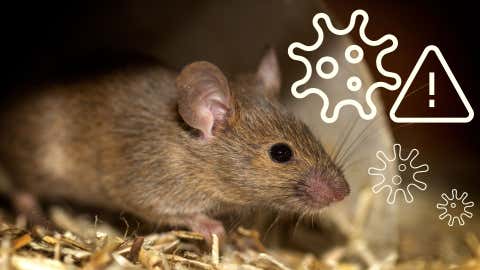Infection
Did Rats Contribute to the Birth of Omicron Variant of COVID-19?

Representational Image
(David Hablutz/Pexel via Canva)
Since the time the Omicron variant was discovered, we know that it has caused numerous re-infections and even broken the immunity barrier created by earlier infections and vaccinations. Even at present, its latest sub-variant — the EG.5.1 or ‘Eris’ — is doing the rounds across the globe, having already been detected in at least 45 countries, including India.
Given that Omicron is the ‘longest running’ COVID variant with more than 1,100 sub-variants and high transmission efficiency, scientists have been persistently investigating its source to curb its spread.
Back in February 2023, scientists detected the Omicron variant in the population of White-tailed deer in the U.S., making it the first animal to be infected by Omicron apart from humans. Later, in March 2023, it was also detected in rats in New York. But it was unclear how the SARS-CoV-2 virus spread among rats, and whether it was circulating within the species and mutating into new strains that would endanger humans.
However, a study published by Dr T Jacob John and Dr Dhanya Dharmapalan in April this year argues that Omicron may have primarily originated in rodents, and then spread to humans!
The Rodent Theory
Two theories were presented regarding the likely origin of the variant: first, that mutations accumulated in an immune-compromised person who had a protracted COVID-19 infection; and second, that the Omicron variant emerged as a result of reverse zoonosis, followed by the circulation of the infection within the species and eventually transmitted back to humans.
While scientists did consider the first possibility, a UK-based report proved that only 2-3 new mutations could be detected in the receptor binding region of the spike protein. Moreover, this pathway could not explain the simultaneous appearance of several sub-variants. In addition, several other reports indicated that the virus could mutate faster in other animals than in humans.
Therefore, researchers favoured the reverse zoonosis theory because of the difference in the structure of Omicron — more mutations on the spike protein gene (that allow viruses to penetrate host cells) than other variants — and a faster transmission in other animals than in humans.
Chinese researchers have already provided evidence for reverse zoonosis. In addition, a research paper also revealed that hamsters bought from a pet store in Hong Kong tested positive for the Delta variant after its owner was diagnosed with the infection.
“On further investigation, other visitors to the pet shop were also found to have Delta. Therefore, it was inferred that reverse zoonosis with SARS-CoV-2 infection had occurred in the hamster colony, followed by hamster-to-hamster spread and subsequently zoonotic spread from them to human subjects,” Dr John told the Times Of India.
Although this circumstantial evidence lends credence to the rodent theory, the mystery of how rats contracted the disease remains an unsolved riddle.
Meanwhile, researchers opine that Omicron’s sub-variants would continue to cause a surge in cases occasionally — as is the case globally at present. “With Omicron illustrating that SARS-CoV-2 is no longer exclusive to humans, the probability of eradication is rated very low,” said Dr John.
This study was recently published in the journal Current Science earlier this year and can be accessed here.
**
For weather, science, space, and COVID-19 updates on the go, download The Weather Channel App (on Android and iOS store). It’s free!

